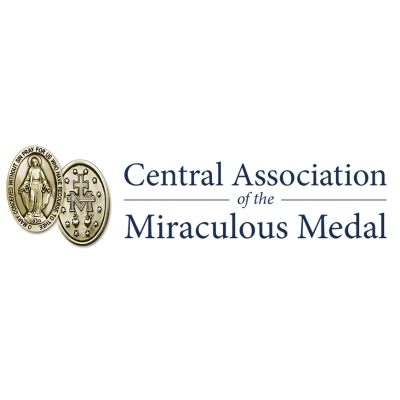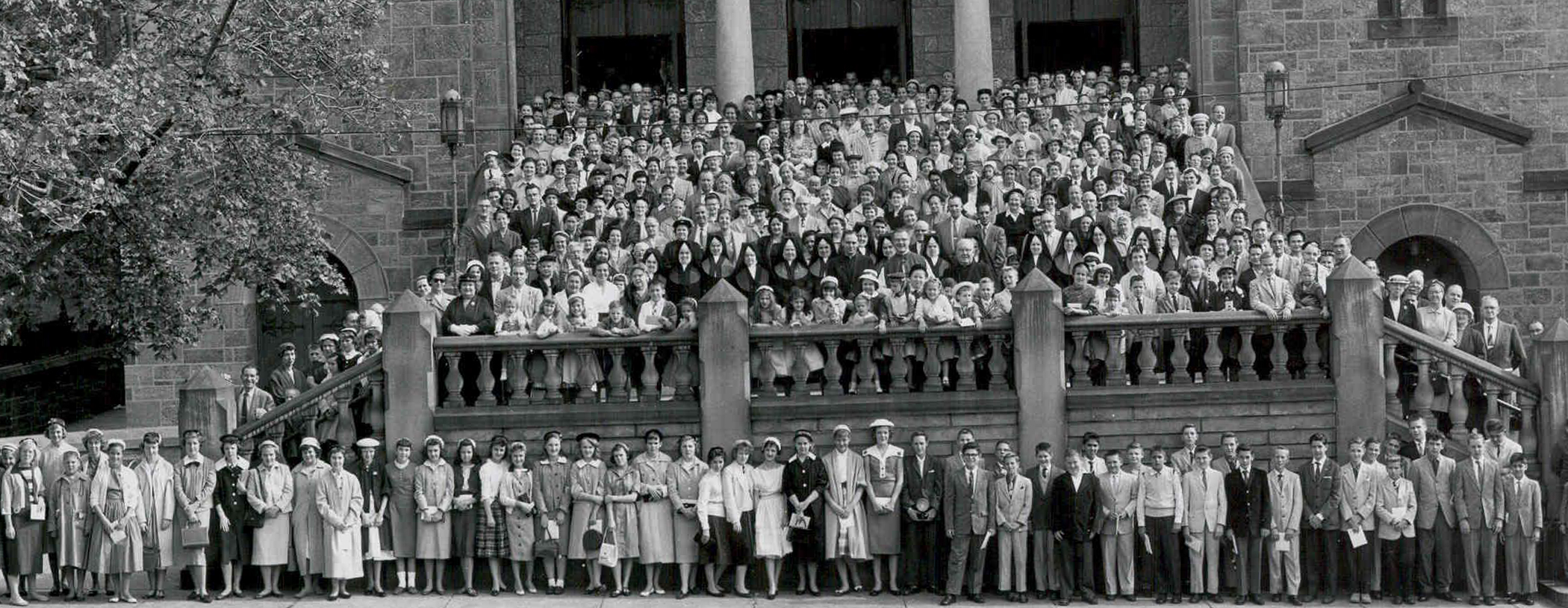The Message Remains the Same
Let’s step back in history. During World War II, The Miraculous Medal Shrine was a sanctuary of hope. Thousands flocked to the Shrine’s Monday Perpetual Novena and Mass.
Shrine Director Fr. Michael Carroll, CM, attributes wartime for the largest number of congregants attending services. “During World War II, there were ten to fifteen thousand people at the Shrine every Monday. People needed hope, and the great thing about the Miraculous Medal is that it brings hope, it brings promise. The entire sanctuary was filled with people.”
Br. Alfred Smith, CM, tells how the city accommodated the throngs of faithful for Monday services. “During the war, extra police officers were assigned because of the crowds. SEPTA ran extra trolley cars on Monday’s, because there were thousands who would come. People lined up on Chelten Avenue waiting for the next service.”
Hundreds still journey to the Shrine for our Monday Masses and Novenas, placing their prayers at Mary’s altar. Others join in prayer virtually through the Shrine’s livesteam and social platforms.
Our beloved Miraculous Medal Family is a prayer community, who continues to grow. This is a constant reminder that while our lives are interspersed with distractions, our Miraculous Medal Family continues to serve those…“who come to the foot of the Altar.”
Mary at Our Side
In the March 1945 issue of the Miraculous Medal Digest – Volume 17, there is an article titled, “Under Mary’s Protection.” It is filled with favors received by service men and women.
One person shares, “Please enroll the 14 men who were killed when their P. T. boat was hit the morning of the invasion. My oldest son received a bad head wound; A shell pierced the engine room where he was and split the engine in half. He was wearing a Miraculous Medal on a chain around his neck, and he prays often to Mary for protection. His life belt would not work; it would not blow up. He managed to get aboard a life raft and found an extra life belt in it. It’s good he did, because they had to abandon the life raft later and swim for a while when it looked as if the ship would capsize and settle on them. We felt sure that Our Blessed Mother saved his life, for it was an extraordinary thing that he wasn’t killed, as his companions were, when the shell struck the engine room. Some time ago, I asked you to place his name at Mary’s Central Shrine. Mary certainly kept him in her care, and we are more grateful than we can say.” This is one of many similar accounts shared with the Miraculous Medal Family.
About a year ago, Eleanor Farzetta visited The Miraculous Medal Shrine and wrote to us about her father’s faith and devotion to Mary. During the war, the Miraculous Medal Digest featured an article and photo about him and his fellow shipmates. Her father, Albert William Chesnavage, was serving in the Coast Guard during WWII. He would gather with other men to pray the Rosary and the Miraculous Medal Novena. Chesnavage shared stories with his family about this time in his life saying, “The men on the ship were very intent and took very seriously the praying of the Rosary and the Miraculous Medal Novena. The guys and I, who organized the gathering, were surprised by the turnout of men who wanted to join our prayer group. This is why we were asking for more booklets. The guys did not want to give them back, as they wanted to keep these prayers with them when they went off to battle. It was a source of comfort for us all. One of the most remarkable events aboard ship was when we were hit by a kamikaze plane and though there was much damage done to the ship, the log book reported, ‘Miraculously, there was no loss of life!’”
Farzetta recollects her father’s strong faith, stating, “His faith never left him. He retired from the Coast Guard after twenty years, married, raised twelve children, and prayed the Rosary every evening around the statue of Mary. He became one of the first deacons in the Diocese of Baltimore, serving at Masses, visiting the sick in hospitals and nursing homes, and attending at funerals. At 99, he attributed his calling from God and His Mother Mary, leading and directing him to do whatever was needed. He kept true to his Coast Guard motto, Semper Paratus, ‘always prepared’ and to do God’s Will.”



